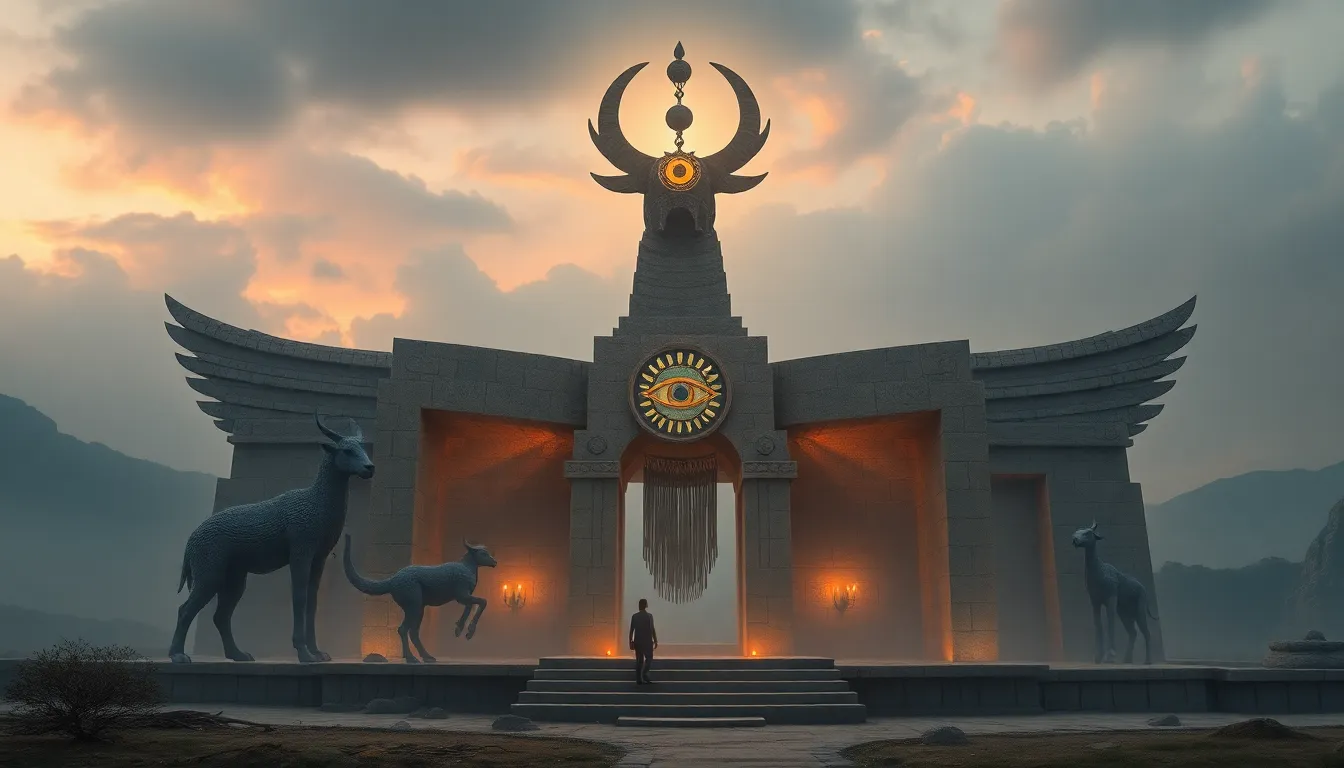The Role of Folktales in Preserving Flood Myths: A Cultural Exploration
1. Introduction to Folktales and Flood Myths
Folktales are traditional narratives that embody the cultural values, beliefs, and experiences of a community. They serve as a means of passing down knowledge, morals, and history from one generation to the next. Flood myths, a specific category of folktales, recount stories of great deluges that often result in the cleansing or rebirth of the world. These myths exist across various cultures, from the ancient Mesopotamians to Indigenous peoples of North America, and they often reflect the values and fears of the societies that tell them.
The purpose of this article is to explore the intricate relationship between folktales and flood myths, examining how these narratives preserve cultural identities and historical memories.
2. Historical Context of Flood Myths
The origins of flood myths can be traced back to ancient civilizations, where they often served as explanations for natural disasters or significant environmental changes. Major flood myths include:
- Noah’s Ark from the Judeo-Christian tradition, which tells of God’s covenant with humanity after a great flood.
- The Epic of Gilgamesh, which features a character named Utnapishtim who survives a flood sent by the gods.
- Deucalion’s Flood in Greek mythology, where Deucalion and his wife Pyrrha survive a divine inundation.
These narratives often arose in regions vulnerable to flooding, shaped by the environmental realities of the time. The structure of these myths reveals a common theme: the balance between destruction and renewal.
3. The Structure of Folktales
Folktales typically contain several common elements that contribute to their effectiveness:
- Characters: Often archetypal figures, such as heroes, gods, or animals.
- Plot: A conflict or challenge that must be overcome.
- Moral Lessons: Insights or teachings that reflect cultural values.
Narrative techniques, such as repetition, metaphor, and dialogue, are often employed to convey these lessons. The structure of folktales aids in the retention of cultural knowledge, making them memorable and impactful.
4. Cultural Significance of Flood Myths
Flood myths hold deep symbolic meaning in various cultures:
- Purification: Floods often symbolize a cleansing of sins or societal ills.
- Destruction: They represent the chaos that can arise from human actions.
- Rebirth: Floods can also signify new beginnings and the promise of renewal.
These myths reflect societal values, such as the importance of morality, community, and respect for nature. They also serve as explanations for natural disasters, providing comfort and understanding in the face of tragedy.
5. Folktales as Oral Traditions
Oral storytelling has been a vital method for preserving myths across generations. Storytellers employ various techniques to engage their listeners, such as:
- Vocal Variation: Changing tone and pitch to convey emotion.
- Gestures: Using body language to enhance the narrative.
- Repetition: Reinforcing key themes and ideas.
This practice strengthens communal identity, as shared stories foster a sense of belonging and cultural continuity.
6. Folktales and Memory Preservation
Folktales serve as mnemonic devices for historical events, helping communities remember their past. Storytelling is pivotal in maintaining collective memory, as it allows for the transmission of knowledge and experiences. For example:
- The tale of the Great Flood in various cultures often parallels historical flood events, linking them to community identity.
- Specific folktales, such as the Tale of the Great Flood among Indigenous peoples, preserve unique cultural perspectives on environmental change.
7. Modern Interpretations of Flood Myths
In contemporary literature and media, flood myths continue to evolve. Adaptations appear in:
- Films: Movies like Noah reinterpret ancient stories for modern audiences.
- Books: Novels often weave flood mythology into their narratives, exploring themes of survival and resilience.
- Art: Visual artists depict flood myths, prompting discussions about human vulnerability to nature.
The relevance of these myths in today’s global climate discussions highlights their enduring significance and adaptability.
8. The Impact of Technology on Folktale Preservation
Digital platforms are transforming the way folktales are shared and preserved. Social media plays a crucial role in revitalizing interest in traditional stories, enabling:
- Wider Accessibility: Folktales can reach global audiences through online platforms.
- Community Engagement: Users can share their interpretations and adaptations, enriching the narrative tradition.
However, technology also presents challenges, such as the potential for cultural appropriation and the dilution of traditional storytelling practices.
9. Cross-Cultural Comparisons of Flood Myths
Examining flood myths across cultures reveals both similarities and differences. Common themes include:
- The concept of divine intervention or punishment.
- The survival of a chosen individual or group.
- The emergence of a new world or civilization following the flood.
Migration and globalization influence the evolution of these folktales, leading to hybrid narratives that reflect shared human experiences and collective fears about nature.
10. Conclusion: The Enduring Legacy of Folktales and Flood Myths
Folktales and flood myths play a crucial role in preserving cultural heritage and collective memory. They offer insights into the values and beliefs of societies, serving as a bridge between the past and present. As we continue to navigate environmental challenges, the lessons embedded in these narratives remind us of our shared humanity and the importance of storytelling in understanding our place in the world.



